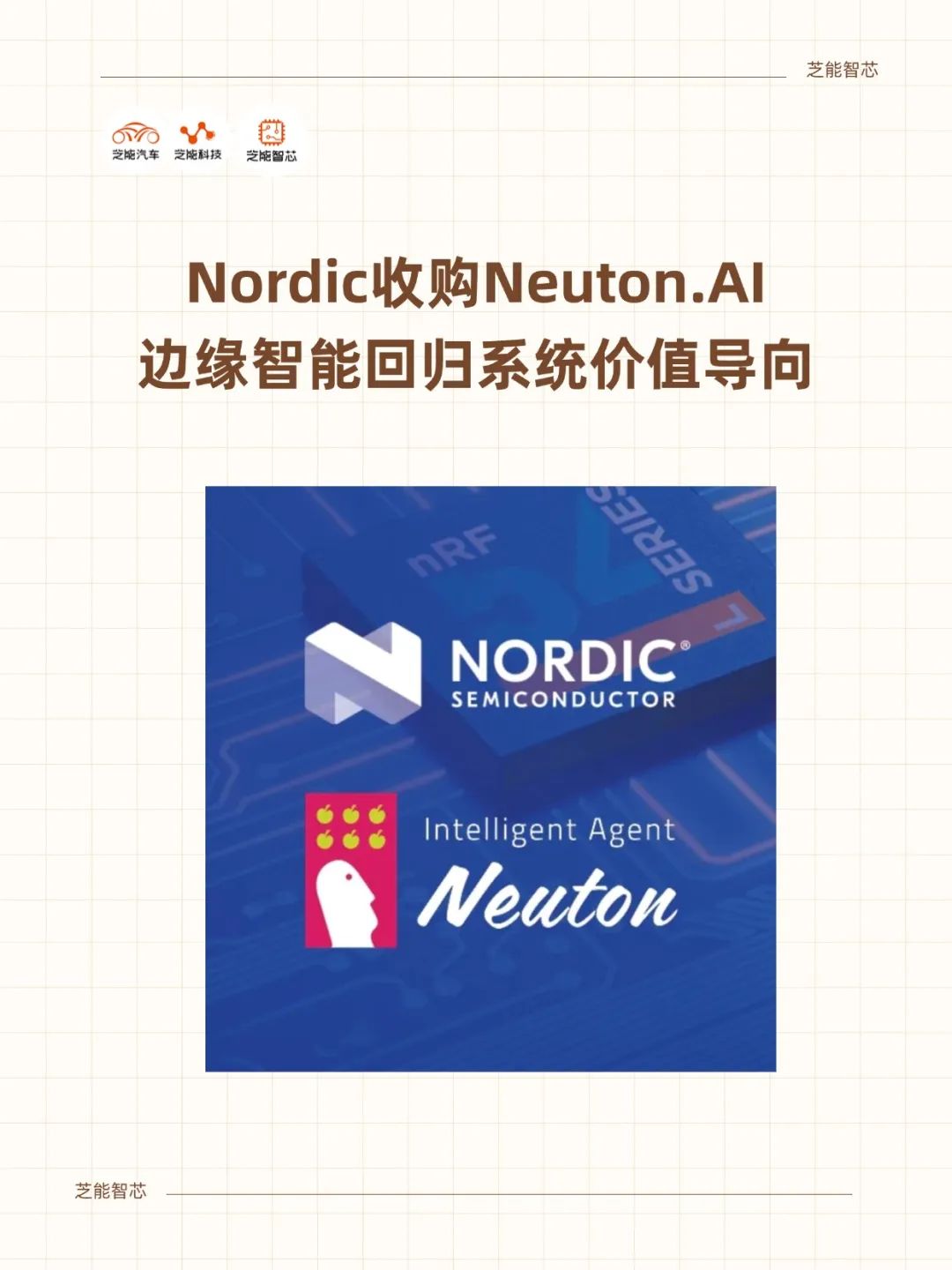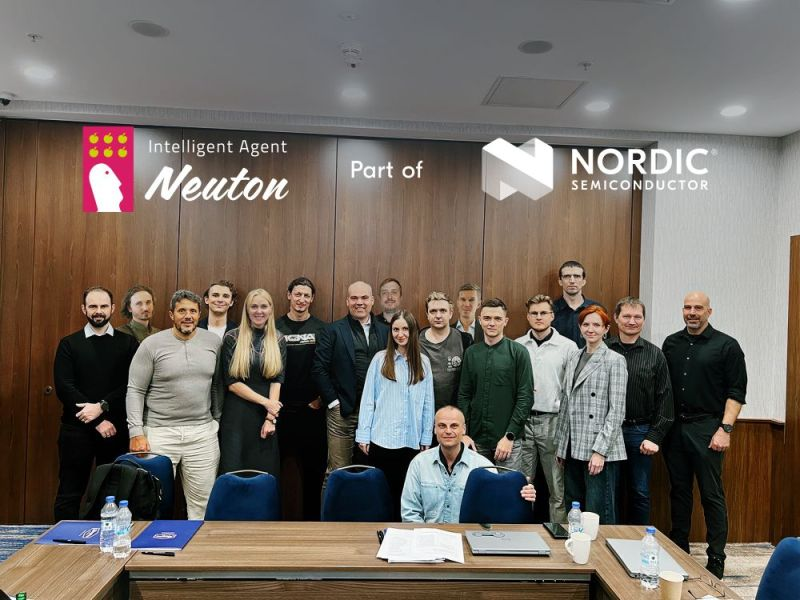Nordic Acquires Edge AI Startup: Collaborative Leap in Embedded AI
![]() 06/30 2025
06/30 2025
![]() 528
528
Produced by Zhineng Zhixin
Nordic Semiconductor announces the acquisition of the core technology and intellectual property of Neuton.AI, an edge AI startup. This strategic move aims to integrate Neuton.AI's lightweight neural network framework with Nordic's low-power wireless communication products, enabling local intelligent computing capabilities for resource-constrained devices.
From an industrial perspective, this acquisition signals the transition of edge AI from experimental stages to practical applications, emphasizing a balance between power consumption, security, and deployment thresholds.
By analyzing Neuton.AI's platform features and Nordic's product strategy, we can understand the practical implications and limitations of this integration for smart terminals, wearable devices, industrial automation, and other scenarios.

Part 1: The Lightweight Nature of Neuton.AI
TinyML Technology Framework and Practical Applications
Neuton.AI is a platform company specializing in automated TinyML tools, distinguished by its ability to generate ultra-small neural network models without traditional data science processes or manual tuning.
Its core advantages lie in two key areas:
● Firstly, the model size is minimal, often less than 5KB.
● Secondly, it can run on low-cost MCUs with 8-bit, 16-bit, or even 32-bit architectures, facilitating local inference and response.

This approach is especially appealing for embedded devices.
Currently, most wearable devices, medical sensors, or smart edge nodes are constrained by power supply, storage, and computing capabilities, making it challenging to deploy traditional AI models.
Neuton's platform automates model generation without predefined network structures, enabling engineers without an AI background to quickly test and deploy intelligent applications, thereby lowering the development threshold.
However, its limitations cannot be overlooked:
● Although the models are small, they have inherent limitations in accuracy and complex task processing, making it difficult to handle image recognition or complex natural language scenarios.
● While model generation does not require a deep learning background, ensuring the quality of training data and model generalization ability still demands experience and guidance.
● The embedded AI ecosystem is still maturing, and related toolchains, verification processes, and platform compatibility are evolving within the industry.
While Neuton.AI boasts certain productization advantages, its influence is primarily concentrated in niche scenarios such as lightweight classification and sensor data analysis.
Its integration with Nordic reflects a broader trend towards local intelligence in the low-power IoT market rather than short-term technological breakthroughs.
Part 2: Nordic's M&A Strategy
Linking with the Edge AI Industry Landscape
Nordic Semiconductor's recent product focus has been on low-power Bluetooth, Wi-Fi, Thread, and other wireless SoC platforms, primarily serving wearable devices, consumer electronics, industrial automation, smart homes, and other scenarios.
The nRF54 series, its new flagship platform, offers significant improvements in power consumption, performance, and integration compared to previous generations.
This acquisition pairs Neuton.AI's AI model generation platform with Nordic's nRF series of wireless SoCs, aiming to complement Nordic's offerings in the "connectivity + intelligence" integrated system.
In the future, developers can achieve both wireless communication and local intelligent computing on the same chip, building more responsive terminal devices without increasing hardware costs.
The acquisition strengthens Nordic's deployment capabilities in the edge AI field but also presents multiple challenges in integration and market rollout.
● One challenge is adapting Neuton models to Nordic's existing SDKs and development platforms.
● Additionally, this technology heavily relies on developer tool ecosystems, training resources, and technical support.
If the subsequent integration pace is too rapid or the platform is not sufficiently open, it may inadvertently increase customer conversion costs.
The edge AI sector itself is characterized by a diverse competitive landscape. Chip manufacturers like STMicroelectronics, Infineon, Cypress, and NXP are all deploying lightweight neural network toolkits and SoC-integrated AI capabilities.
● For instance, STMicroelectronics' NanoEdge AI Studio emphasizes on-device learning and local deployment on STM32 MCUs, offering a more mature toolchain than Neuton.
● Infineon, in collaboration with SensiML, promotes AI experiences in wearable applications, also providing holistic solutions from a platform integration perspective.
For Nordic, the acquisition of Neuton.AI brings platform-level flexibility and a degree of differentiation. However, establishing a stable tool ecosystem, simplifying development processes, and lowering learning thresholds will be crucial for its future industrialization.
Summary
From an industry trend perspective, edge AI has emerged as a significant development direction for low-power IoT, with a particular emphasis on optimizing response speed, data privacy, and network dependence.
Nordic's acquisition of Neuton.AI seeks to create vertical integration across chip, communication, and algorithm levels, thereby developing replicable, deployable, and scalable local intelligent solutions for AIoT devices.
Currently, TinyML is still in its nascent stages, with issues such as model size, training processes, deployment efficiency, and tool compatibility yet to be fully resolved.
While Neuton.AI excels in lightweight deployment, it must further enrich its functions and ecosystems to attract a broader developer community amid increasingly complex embedded applications.








